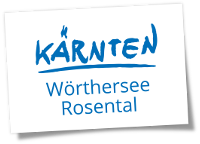-
Meerauge im Bodental Naturschauspielereien im Rosental -
Zurück zur Natur Entdecker-Paradies Rosental -
Erlebnis Südkärnten Aufregend ruhig. -
Panoramaweg Südalpen Grenzenlose Gipfelsiege
Panoramaweg Südalpen: Etappe 17 vom Griffner Berg zur Pöllinger Hütte
-
Saualpe - Sonnenuntergang © (c) Panoramaweg-Suedalpen-Etappe-1-©StefanFilzmoser / Panoramaweg Südalpen
Herrlicher Ausblick auf die Karawanken bis zu den Julischen Alpen. Die auf 1646 Meter hoch gelegene Pöllinger Hütte ist das Ziel dieser Etappe, wo eine typische Lavanttaler Jause wartet. Alternativ kann auch die Wolfsberger Hütte als Etappenziel gewählt werden. Doch zuvor führt diese Tour durch wunderschöne Wälder und Almwiesen hinauf auf die Saualpe.
Wandern Sie sorgenfrei am Panoramaweg Südalpen!
Das Offizielle Panoramaweg Südalpen Info- & Buchungscenter mit dem preisgekrönten Team der Trail Angels unterstützt Sie dabei gerne. Ob Fortgeschritten, Einsteiger oder klimafreundliches Wandern mit Bahnanreise: Beim kompetenten und hilfsbereiten Buchungscenter Team sind Wanderer bestens aufgehoben. Vor allem wenn sie auf Ihrer Wanderung die persönliche Freiheit und Sehnsucht nach dem Besonderen mit Service, Komfort und Sicherheit verbinden wollen.
Information und Buchung:
Offizielles Panoramaweg Südalpen Info- & Buchungscenter
Powered by Trail Angels
Obervellach 15, 9821 Obervellach
+43 4782 93093
www.trail-angels.com
https://www.bookyourtrail.com/trail/panoramaweg-suedalpenwww.trail-angels.com/service-offizielles-buchungscenter
Ascent: 1071 m
Descent: 153 m
Minimum Altitude: 702 m
Maximum Altitude: 1727 m
Length: 14.9 km
Duration: 310 min
Difficulty: medium
Condition:
Experience:
Landscape:
Author: KSL/Graßler

On S highway/E66 exit St. Andrä - traffic circle first exit to Klagenfurt/Griffen - Griffner Berg Gh Bierbaumer.
Arrival by bus possible. More information under ÖBB - Postbus.
Parking possible at Gasthof Bierbaumer.
instructions
From the Bierbaumer inn, head north towards Pustriz. Following the ÖAV trail no. 338, turn right into a hollow path shortly before Pustritz.
You soon reach a small settlement on hollow paths and narrow climbs. After a short stretch on a mountain road, the stage leads through a forest and past two farmsteads to the Tormannkogel.
Now follow the ÖAV hiking trail no. 338 towards the romantic scattered settlement of Tschrietes. From Tschrietes there is a magnificent view of the Karawanken. Follow hiking trail no. 338 to Gasthof Petutschnig, one of the oldest inns in Carinthia. The hike continues over the Kostmannkogel and the blast furnaces to the edge of the forest. Below the Speikkogel, the trail heads towards Wolfsberger Hütte. Turn right at the crossroads and continue downhill until you reach the Pöllinger Hütte.
Höhenprofil

Do you want to allow Integration of external maps material?
Allows displaying map-material (images) from openstreetmap to provide interactive map-features. By allowing this feature, you accept the privacy agreement of openstreetmap.
Impressionen
additional_information
safety_instructions
10 recommendations from the ÖAV
As an outdoor sport, mountain hiking offers great opportunities for health, community and adventure. The following recommendations from the alpine associations are designed to make mountain hikes as safe and enjoyable as possible.
1. healthy in the mountains
Mountain hiking is an endurance sport. The positive stress stimuli for the heart and circulation require good health and a realistic self-assessment. Avoid time pressure and choose a pace that ensures no one in the group gets out of breath.
2. careful planning
Hiking maps, guide books, the Internet and experts provide information about the length, altitude difference, difficulty and current conditions. Always tailor tours to the group! Pay particular attention to the weather forecast, as rain, wind and cold increase the risk of accidents.
3. complete equipment
Adapt your equipment to your tour and make sure your rucksack is light. Rain, cold and sun protection should always be in your backpack, as well as a first aid kit and cell phone (Euro emergency number 112). A map or GPS will help you find your way.
4. suitable footwear
Good hiking boots protect and relieve your feet and improve your sure-footedness! When making your choice, look for a perfect fit, non-slip tread sole, waterproofness and low weight.
5. sure-footedness is the key
Falls as a result of slipping or tripping are the most common cause of accidents! Be aware that too much speed or tiredness can severely impair your surefootedness and concentration. Watch out for falling rocks: by walking carefully, you can avoid falling rocks.
6. stay on marked trails
In pathless terrain, the risk of losing your bearings, falling and falling rocks increases. Avoid shortcuts and return to the last known point if you lose your way. Often underestimated and very dangerous: steep old snowfields!
7. take regular breaks
Taking a break at the right time helps you to relax, enjoy the scenery and socialize. Eating and drinking are necessary to maintain performance and concentration. Isotonic drinks are ideal thirst quenchers. Muesli bars, dried fruit and cookies satisfy hunger on the way.
8. responsibility for children
Make sure that variety and playful discovery are at the forefront for children! In passages where there is a risk of falling, one adult can only supervise one child. Very exposed tours that require prolonged concentration are not suitable for children.
9. small groups
Small groups ensure flexibility and allow for mutual help. Inform familiar people about the destination, route and return. Stay together in the group. Beware of lone hikers: even minor incidents can lead to serious emergencies.
10 Respect for nature and the environment
To protect mountain nature: do not leave any waste behind, avoid noise, stay on the paths, do not disturb wild and grazing animals, leave plants untouched and respect protected areas. Use public transport or form car pools to get there.
equipment
Packing list - multi-day hike
- Breathable hard shell jacket Fleece or softshell jacket
- Hiking pants, zip-off
- Hiking boots
- Backpack (approx. 35 liters)
- Functional T-shirts
- Functional underpants
- Pair of hiking socks
- Sun hat
- Rain trousers
- Thin hat and gloves
- Maps & tour description
- Water bottle or hydration bladder
- Hut sleeping bag/silk inlet
- Trekking poles
- GPS device
- LED headlamp
- Cell phone & alpine emergency number
- Sunglasses
- First aid kit
- Blister plaster
- Small pocket knife
- Sun cream
- Hygiene articles
- Travel towel
- Tour provisions
suggestion
There are two pilgrimage churches close to the hiking route. One is in Pustritz and the second is in Tschrietes.
maps
Compass - Panorama Trail Southern Alps No. 218
Maybe interesting
Impressions from the Rosental Valley #karawanken
Do you want to allow Flowbox?
Allow the inclusion of an external widget, that is used to display social media content. By allowing this feature, you accept the Privacy agreement of Flowbox AB.
Wörthersee App
Your digital travel companion
Modern vacationing - with all important services, top listings and the PLUS CARD directly on your smartphone.
learn more Aktivierejetzt den Visit
Wörthersee
Skill in deiner
Alexa App
Social Media
#visitwoerthersee
Newsletter
News around the lake
Sign up for the newsletter and follow us on social media so you don't miss out on anything you shouldn't.



